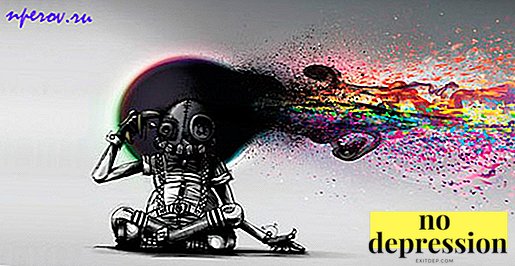Do you feel that you have a writing talent and a desire to develop it? Then you should learn all about how to write a book. We offer step by step instructions, following which, you can become the author of the bestseller. Well, if not a bestseller, then a good work - for sure.
How to write a book: 6 tips
Identify the topic and audience
Every person has a story to tell. But will everything seem interesting to readers? Choosing a topic, you need to ask yourself this question. To please everyone, of course, will not work. The same text rarely delights intelligent thinkers of advanced age and problem adolescents. Therefore, it is worth describing your reader. Imagine who he is and what he reads.
The text should:
- Be interesting to him, close, understandable.
- Report something important or useful.
- Tell a memorable story.
- Reveal the image of a bright hero, perhaps similar to the reader.
- Create a fascinating world that you don't want to part with.
There are stories that have become the skeleton of most works of art. For example, the main character lives his own life, but he is drawn into adventure. He overcomes obstacles, defeats villains, perhaps falls in love and becomes a winner.
Outline the plot and determine the conflict
The word "outline" in the title of this item is not used in vain, because the plot can be changed and altered several times. It happens when, having revived your own heroes, you begin to learn and understand them better.
An interesting story makes the conflict, that is, the confrontation of the main character with someone or something opposite. How to write a good book? Develop an interesting topic, come up with a fascinating plot and vivid conflict.
Here are the most common conflicts of the protagonist:
- He is against nature: overcoming cataclysms, the struggle for survival.
- He is against society: a clash of views.
- He is against another hero - the most common conflict.
- He is against himself - an internal struggle.
It is not necessary to choose one of them, because each author has his own vision of the plot. But to determine its approximate shape still stands.
Create characters
No stories can exist without characters. In literature everything is possible - the wind or, for example, a chair can easily become the protagonists. Let them even silent or abstract.
It is important that the characters' speech correspond to their age, education and other components. The effect of this literary pattern is illustrated in the work “Pygmalion” by Bernard Shaw. The classic did not spend much time describing the portrait of the main character Eliza Doolittle. But he carefully invented all the replicas of the girl, showing a low level of her general culture. To write a book, you need to take into account all the details of the image of their characters.
When several images are described separately, you can begin to reduce them among themselves, to acquaint.
We offer several ideas of what heroes can do while they are talking.
- Walking pets
- Choose or wrap gifts
- Make a tattoo
- Playing board games
- Do morning jogging
- Buy groceries in the supermarket
- Ride the elevator
This list can be continued indefinitely, and each author has the opportunity to come up with their own original version.
Lay down a plan
How to write a book whose plan is not yet complicated? The answer is unequivocal - to sit down without delay for the scenario plan. It structures the text, organizes thoughts, recalls logic and sequence.
The term “scenario plan” is usually used in a literary work, since it is a chain of scenes and plot events.
Someone is not used to using it, but for someone it is the first step in the quest to write a book.
The plan plays the role of a scheme, a crib for the author. Some depict it in the form of various tablets, diagrams, puzzles or cards. But no matter what it will be like. The main thing is the content: the names of the characters, their motives, external conflict, internal experiences.
Structurally, the scenario plan should consist of three parts: conflict, the path to disaster, conflict resolution. If you make a detailed plan, you can register separately and plot pictures, events, scenes, even dialogues. For example:
Chapter 15. The meeting of Alexander and Veronica. The focal hero is Veronica (that is, what is happening will be depicted on her behalf and through the prism of her worldview). Veronica and Alexander meet in a cafe. Between them there is a quarrel, as a result of which Veronica, not expecting from herself, confesses Alexander to love and runs away.
Come up with a catchy start
Questions "How to write a book? Where to start?" Almost all young authors are worried, because it is known that it depends on the first lines whether they read the novel to the end or not.
Several options to get you started:
- Prologue.
- Legend or parable.
- Prehistory (events from the past of the hero).
- Excerpt from the middle of the plot.
- A dialogue between characters who are not protagonists, but related to events.
- The final (and then begins the story of why it happened).
In the literary environment there are many followers of writing books from the end. For example, John Irwin. The author claims that it is starting from the last lines you can write a masterpiece, without missing anything important along the way. The secret of his technique is to first write one last sentence. After him, the penultimate. And to continue this way until there is an understanding of what is happening, an understanding in which direction one's own thoughts are moving.
Phrases starting the first chapter can be:
- Portrait - a description of the hero.
- Biographical - the story of his life.
- Effective - active character dialogues without preliminary explanation.
- Landscape - a description of nature.
- Detailed - a description of the part that will become an important symbol in the text.
- Autobiographical - the story of the first person about his life.
Start writing, finding inspiration
"To call the Muse" by the hour is an important skill for someone who wants to learn how to write a book correctly. A good solution would be to create a ritual of writing, arranging the space for its comfortable implementation.
Morning hours for a cup of tonic tea or evening vigil with aromatic coffee? - at the discretion of the creator of the future masterpiece, here it is necessary to build on personal biorhythms and life circumstances.
The world literature knows the most amazing combinations: Ernest Hemingway, who is standing still, Marcel Proust, who is lying down, is standing up, Friedrich Schiller, inspired by the scent of rotten apples.
It makes sense to surround yourself with your favorite objects, music, smells, even to get a card file of inspiring things - it is quite possible that it will be faster to write a book with such a list. And obviously nicer.
How to write your book, or Randy Ingersson's snowflake mode
- We tell the story you want to write about in 15 words.
- Avoid names, but point out the difficulties and problems that the hero must overcome.
- We transform the first sentence into the first page of the text of 5 sentences.
1 line - introduction.
2 and 3 - conflicts.
4 - the most loaded part of the plot.
5- ending.
- Create a profile for the characters, indicating their name, character traits, especially the appearance. We suggest that it may be with them at the end.
- We write a whole section of each sentence of the second step. Four sections need to end with a conflict, and the fifth - the outcome. Following this scheme, it will be much easier to write a book.
- Expand the profile of heroes to the time until it becomes a full story about each of the characters.
- We find the points of contact between their stories, we reduce them to conflict.
- We write down in chronology a list of scenes that will be developed. We indicate the main character in each of them.
- We paint each scene or we are working on a detailed plan.
- We write the first draft.
You can talk a lot about how to write a book, because a book today is an unequivocal trend. So why not catch a fashionable wave and not try yourself in writing? This is an opportunity to express yourself and gain creative experience.



